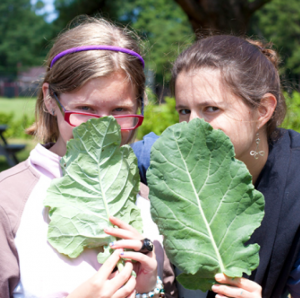All children and youth in Vermont have the right to opportunities that will help them grow into happy and healthy adults. It’s what we believe and what we strive to make a reality through our work. By working to ensure there are quality learning opportunities outside the school day, we are slowly making this goal a reality. However, do we know if these opportunities are available for ALL students? We start by looking at who is participating, and we can see from the 2017 Youth Risk Behavior (YRBS) data that high school students who are racial or ethnic minorities are less likely than their white, non-Hispanic peers to participate in extracurricular activities.
We now have access to the 2019 YRBS data and once again are wondering the same thing: is there still a gap in participation between white students and “racial and ethnic minority” [termed used in the YRBS study and known as REM in this post] students? The chart below shows that, yes, the gap remains. First off, REM students are more likely that white students to not participate in any weekly afterschool or extracurricular activities at all. While 33% of white high school students do not participate in any weekly hours of out-of-school-time activities, 36% of REM high school students did not participate.

Among high school students who do participate regularly in out-of-school time programming, racial and ethnic minorities participated in fewer average weekly hours than their white peers. In the one to four hours range, the participation rate was higher for racial and ethnic minorities (28.4% participation vs. 25.1% participation rate for white students). White students are more likely that REM students to participate in between five and 19 hours of weekly programming. Over 35% of white students participated in 5-19 hours of weekly programming while 29% of REM students did so. These levels of participation are significant because past data show that they correspond with the best outcomes as far as reduced risk behaviors and increased positive outcomes (See past blog posts about plans for enrolling in post-secondary education, feelings of connectedness with the community, earning good grades, bullying, abusing opioids, and drinking alcohol as examples).
We have data related to afterschool programming participation going back to 2015. Since the YRBS is administered every other year, we have three cycles’ worth of data to compare. The chart below shows the gap between white students and REM students across each year for all three levels of programming.

In all three years, the largest gap was for the 5 to 19 hours of participation level. In each of the three years, white students were 6-7% more likely than their REM peers to attend out-of-school time programming. Racial and ethnic minorities were at least 2.5% more likely than white students to not participate in any afterschool programming each year, with the largest gap being in 2019 (2.9%). The gap in the lower participation hours (one to four hours per week) also increased slightly. In 2019, racial and ethnic minorities were 3.3% more likely than white students to participate at these lower weekly levels. Conversely, the gap at the 20+ hours level narrowed. In 2019, the difference was only 0.5% (with REM students in the higher group), which was down from a 1.4% difference in 2017. It appears that on average, REM students’ number of weekly hours of participation shifted downward between 2017 and 2019.
While looking at these data, it is important to do this with the perspective that they were collected prior to COVID-19. For that reason, the 2021 YRBS data related to these measures will be quite telling. Already, we see evidence that the pandemic has exacerbated racial differences among youth and their ability to participate in essential educational experiences. In December 2020, for example the New York Times reported that more white students than black students have been returning to in-person learning upon schools reopening. Therefore, we don’t anticipate these gaps related to afterschool participation in Vermont to close in the immediate future. We have a road ahead. In Vermont, as we look forward to a bigger return to “normal” in 2021 and beyond, we need to work with the field to anticipate these barriers to participation among students of color and do what we can to mitigate them.

